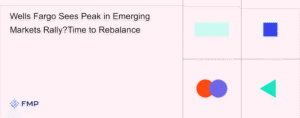Investors braced for market turbulence after U.S. President Donald Trump’s return to power, but few anticipated the dramatic turnaround that has unfolded so far this year. At first glance, global stocks appear almost unchanged from their early-year levels, and volatility measures like the VIX remain far from the soaring peaks seen during the pandemic and financial crisis. However, a closer look reveals a market in flux.
A New Landscape in Asset Performance
While many investors expected challenges from Trump’s “America First” policies, the risk focus has shifted dramatically. Initially, fears centered on rising inflation and a delay in U.S. interest rate cuts. Instead, safe-haven assets have taken center stage:
-
Gold’s Remarkable Rally:
The ultimate refuge during turbulent times, gold, has posted its best quarterly gain since 1986—driven by the trade war and a weakening dollar. This surge underscores investors’ preference for stability amid uncertainty. -
The Dollar’s Downslide:
The U.S. dollar is flirting with its worst start to a year since the 2008 global bust, reflecting mounting concerns over economic growth and aggressive tariff measures. -
Tech Titans Under Pressure:
The so-called “Magnificent Seven” of U.S. tech have lost nearly $2 trillion in value. These once-reliable cash cows are now being outpaced by Chinese rivals and European defense firms, reshaping the competitive landscape in technology.
Shifting Risk: From Inflation to Recession
According to Nicolas Forest, Chief Investment Officer at multi-asset fund manager Candriam, the market’s risk narrative has completely reversed. In January, the major concern was that Trump’s policies would drive inflation higher and prevent rate cuts. Now, the overriding worry is recession risk. This shift has dramatically altered market dynamics, even influencing the world’s $140 trillion bond market.
Benchmark U.S. Treasuries are on track to deliver around a 2.7% return for Q1, as yields—which serve as a proxy for borrowing costs—have fallen by over 20 basis points. This bond market turnaround highlights the growing sentiment that economic growth may be slowing.
For those looking to delve deeper into market valuations and how different sectors are faring, the Sector P/E Ratio endpoint offers valuable insights into the relative performance of industries amid these turbulent times.
What Lies Ahead
The evolution of market risk—from inflation concerns to the specter of recession—has left investors with a complex landscape to navigate. The cautious optimism around safe-haven assets like gold contrasts sharply with the steep losses in major tech stocks. Meanwhile, the bond market’s pivot suggests that lower interest rates might help cushion the blow from a potential economic slowdown.
As geopolitical tensions, trade policies, and shifting investor sentiment continue to influence market dynamics, staying informed and agile is more important than ever. This period of volatility may offer opportunities for those who can adapt to the new reality, but it also calls for vigilance in monitoring the evolving risks.




